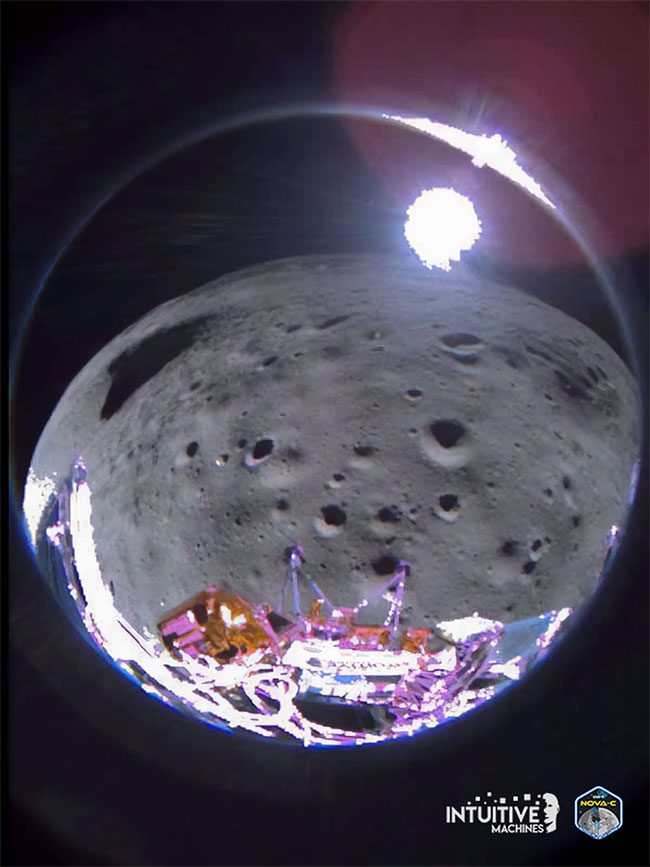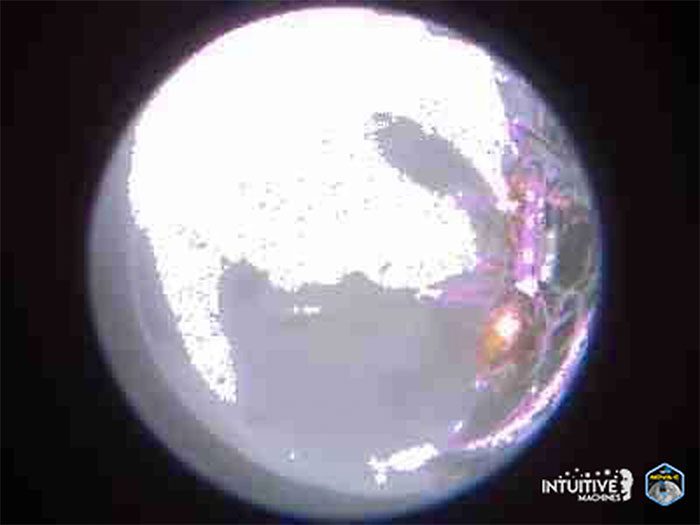The Odysseus probe, belonging to the American private company Intuitive Machines, has sent back the first images from the southernmost point of the Moon.
The spacecraft, standing over 4 meters tall, landed on the Moon at 23:23 GMT on February 22. This event marks the first time in over 50 years that a U.S. spacecraft has returned to this celestial body.

The image of the southernmost point of the Moon captured by a camera mounted on the right side of the spacecraft just before landing. (Photo: Intuitive Machines/X).
On February 26, Intuitive Machines posted two images on social media platform X, one showing the moment the spacecraft touched the surface and the other capturing the instant it landed, revealing the surface layer of the Malapert crater.
Notably, this spacecraft is also carrying scientific equipment from the National Aeronautics and Space Administration (NASA), which aims to explore the Moon’s southern region before sending its astronauts there. This mission is part of the Artemis program.
The U.S. space agency has signed a strategic contract with SpaceX, utilizing rockets from this company to return astronauts to the Moon.
This partnership enables NASA to conduct regular flights to the Moon at an affordable cost.
It also aims to stimulate the development of a lunar economy, supporting the long-term presence of humans living and working on our satellite—one of the goals of the Artemis program.

The Odysseus spacecraft sends images from the lunar surface as it lands at Malapert. (Photo: Intuitive Machines/X).
On the same day (February 26), the Japan Aerospace Exploration Agency (JAXA) also announced that the SLIM probe, which landed on the Moon’s southern pole at the end of January, had resumed operations.
Both the Japanese and American probes encountered issues while landing on the Moon’s southern region. For the SLIM probe, it had lost power because its solar panels were not positioned correctly to capture sunlight.
The spacecraft entered a dormant state in temperatures as low as -183 degrees Celsius. More than a week later, the solar panels regained power as the sunlight direction changed.
Meanwhile, the Odysseus spacecraft tilted during its landing due to an uneven landing surface.
This caused the spacecraft to flip and lie on its side. Fortunately, a rock nearby provided support to the Odysseus, preventing it from completely tipping over.
According to scientists, the difficulties faced by spacecraft during lunar landings are partly due to the low gravity of the Moon. Additionally, they must carry heavy research equipment, making them more susceptible to tipping or misalignment during landing.


















































